Century of British Cooking
2015 would have been the year the redoubtable Marguerite Patten celebrated her 100th birthday. Sadly, she died on the 4th June 2015, just five months short of her birthday. In her honour, Grub Street is reissuing a new edition of the first book we published by Marguerite back in 1999, her comprehensive Century of British Cooking. In this book each chapter covers one decade of the 20th century giving both history and recipes. The entire book is illustrated throughout in colour and black and white.
Marguerite Patten OBE wrote over 160 cookery books, sales of which amount to over 16 million worldwide. Her long and distinguished career, which began before the war, included regular appearances on radio and television, live and televised cookery demonstrations, lectures as well as extensive journalism and authorship of books and cookery cards.
Marguerite was one of Britain’s best known and loved cookery writers and has often been described as England’s Cookery Queen. Ainsley Harriott dubbed her “the cookery icon of our times”. Her Century of British Cooking pulls together her life’s work, with over 200 recipes and is truly an important work of culinary history.
Marguerite Patten OBE, was born in Bath, Somerset, in 1915 and grew up in Hertfordshire. She started cooking for her family at a very young age when her mother had to return to work. When the Second World War broke out, Marguerite started working for the Ministry of Food, suggesting inventive and cost-effective ways to make the most of your rations. Her ideas were broadcasted on BBC radio in a programme called ‘Kitchen Front’. She became one of the first ‘celebrity’ cooks on television and one of the most successful food writers, firmly establishing herself as a culinary icon.
With over 170 cookery books to her name and a lifetime spent in the food world, Marguerite Patten’s association with Grub Street has been a privilege. Her books are as in-demand today, as the first time they were published; the first printing of her book The Basic Basics Jams, Preserves and Chutneys Handbook sold out in the first six weeks.
FISH AND VEGETABLE TEMPURA
POACHED SALMON
LANCASHIRE HOTPOT
PICKLED RED CABBAGE
VENISON IN CALVADOS
PISTACHIO AND PINEAPPLE ICE CREAM![]()
FISH AND VEGETABLE TEMPURA
Tempura is the Japanese method of frying various foods so they become golden and beautifully crisp. While you can make Tempura with just one ingredient, such as prawns, it becomes a more interesting and delicious dish if a selection of foods are chosen. Recipes for Tempura batter vary but I like a combination of flour and cornflour.
Serves 4
For the batter:
50 g/2 oz plain flour
50 g/2 oz cornflour
1 teaspoon baking powder
1 egg, whisked lightly
200 ml/7 fl oz cold water
For the dipping sauce:
3 tablespoons sake or dry sherry
2 tablespoons soy sauce
225 ml/7 1/2 fl oz dashi or fish stock
1 tablespoon finely grated root ginger
3 tablespoons finely grated white radish or ordinary radishes
For the Tempura:
300 g/10 oz monk fish or other firm fish or scallops
8 to 12 large prawns, preferably uncooked selection of vegetables, such as mangetout, small mushrooms, small green beans groundnut or sunflower oil
Mix all the ingredients for the batter together. Pour the wine or sherry, soy sauce and stock into a saucepan. Bring just to boiling point. Keep hot and add the grated ginger and radish just before serving.
Cut the fish into neat dice; peel the prawns, although it is considered correct to leave on the tails. Wash and dry the vegetables, trim away any tough ends. Preheat the oil to 185ºC/365ºF (or when a cube of 24-hour bread turns golden in under 3/4 minute).
Dip the foods into the batter, make sure they are coated with a thin layer but have no excess batter falling off; this could burn in the oil. Drop small amounts of the coated foods into the oil and cook steadily until crisp and golden. Lift out on to absorbent paper then either keep hot or serve immediately. The hot dipping sauce should be poured into small bowls and served with the food.
Pickled red cabbage
Shred the cabbage finely with the stainless steel knife. Discard hard stalks. Put a layer of cabbage into the dish then a layer of kitchen salt, continue like this, ending with salt. Leave for 24 hours; drain away the moisture. For a less salt flavour rinse in cold water then drain again.
Heat 1 tablespoon mixed pickling spices (or as required) in each 600ml/1 pint malt vinegar; strain then cool. Put the cabbage into a container, cover with the vinegar. Leave for several hours, turn over once or twice. Pack into cold sterilized jars; top with the vinegar and cover.![]()
POACHED SALMON
In spring and summer, hot or cold poached salmon was considered a most luxurious and delicious dish for special occasions. If serving cold it was served with mayonnaise but when hot the perfect accompaniment was Hollandaise Sauce (old recipe books often call it Dutch Sauce). Fresh salmon in the 1930’s was the wild fish and therefore in season only from March to August. It was not until the 1970’s that salmon farms were established and salmon became an ‘all-the-year-round’ fish.
Undoubtedly farmed salmon has a good consistent taste but wild salmon, at its best, is the finer fish.
SERVES 6 OR MORE AS AN HORS D’OEUVRE
1 whole salmon about 1.4kg/3lb in weight.
1.5 litres/2½ pints water or fish stock or Court Bouillon, see below.
To Garnish:
Lemon slices, parsley and/or fennel
Sliced cucumber
Most homes, where a large amount of cooking was done, had a fish kettle in the 1930’s and this was ideal for whole fish; for it could be placed on the rack and lowered into the liquid so there was no fear of it breaking.
Clean the fish by washing it well, slit down the stomach and remove the intestines. It has always been traditional to leave both the head and tail on the fish. Scrape away the scales from the body with the back of a knife. Place the fish in the cold liquid in the container. Bring to simmering point and then time the cooking. Allow 7 minutes per 450g/1lb for a fish up to 1.4kg/3lb. For a larger fish add an extra cooking time.
Carefully remove the fish from the cooking container. Remove the skin, but keep the fish intact. Garnish and serve.
To make Court Bouilon: for a salmon weighing approximately 1.4kg/3lb peel and thinly slice a medium onion and a medium carrot. Remove 2 or 3 slices of top zest from a lemon. Add to 1.2 litres/2 pints of water or fish stock and 300ml/ ½ pint white wine with 1 bay leaf, a small sprig of parsley or fennel and a little seasoning.![]()
LANCASHIRE HOTPOT
This was a favourite family dish throughout Britain for it could be adapted according to changing fortunes. When times were hard there would be less meat and more potatoes and onions. It would be cooked slowly in a deep pottery casserole. A housewife, who in the early part of the century might not have an oven of her own, would take the hotpot to the baker to be cooked by him.
SERVES 4
3 large onions, thinly sliced
8 to 10 medium potatoes, thinly sliced
2 lambs’ kidneys, skinned and sliced
8 middle neck of lamp chops
Salt and freshly ground black pepper
250ml/ 8 fl oz lamb stock or water
25g/1 oz butter or margarine
To Garnish:
Chopped parsley
Preheat the oven to 160C/325F, Gas Mark 3/150C with a fan oven. Put a layer of potatoes, onions, then kidney and chops into the casserole. Season lightly. Continue like this, ending with a neat layer of potatoes. Add the liquid.
Melt the butter or margarine and brush over the top of the potatoes. If there is space between the potatoes and the lid the casserole can be covered but if the lid fits tightly it is advisable to cook for 30 minutes in an uncovered container, to make sure the potatoes do not stick to the lid. After this time the casserole can be covered.
Place in the oven and cook for a total of 2 hours. Remove the lid for the last 30 minutes so the potatoes become crisp and brown. Garnish and serve with pickled red cabbage (page 154).
A modern touch: use lean slices of lamb fillet instead of chops; substitute white wine for the stock or water. Add the sliced mushrooms and thickly sliced tomatoes to the onions.![]()
PICKLED RED CABBAGE
Shred the cabbage finely with the stainless steel knife. Discard hard stalks. Put a layer of cabbage into the dish then a layer of kitchen salt, continue like this, ending with salt. Leave for 24 hours; drain away the moisture. For a less salt flavour rinse in cold water then drain again.
Heat 1 tablespoon mixed pickling spices (or as required) in each 600ml/1 pint malt vinegar; strain then cool. Put the cabbage into a container, cover with the vinegar. Leave for several hours, turn over once or twice. Pack into cold sterilized jars; top with the vinegar and cover.
![]() VENISON IN CALVADOS
VENISON IN CALVADOS
For centuries many people living in the country had the opportunity to cook venison. Though in towns and cities the game was virtually unknown. The late 1980s changed this situation as both wild and farmed venison came into supermarkets. There was a belief that it was essential to marinate venison before cooking but prime cuts do not need this treatment.
Serves 4
4 unsmoked bacon rashers, derinded
2 dessert apples, peeled and cored
50 g/2 oz butter
1 tablespoon olive oil
1 tablespoon soft brown sugar
Salt and freshly ground black pepper
4 portions venison fillet
5 tablespoons Calvados
25 g/1 oz plain flour
150 ml/1/4 pint game or beef stock (page 000)
225 ml/7 1/2 fl oz red wine
1 teaspoon juniper berries, crushed
1 teaspoon rosemary leaves or 1/2 teaspoon dried rosemary
3 tablespoons double cream
Preheat the oven to 180ºC/350ºF/Gas Mark 4/170ºC with a fan oven. Cut the bacon into 2.5 cm/1 inch pieces and each apple into 8 slices. Cook the bacon in a frying pan for 5 minutes, remove with a slotted spoon. Add half the butter and half the oil, put in the apple slices and cook gently until golden brown on both sides. Sprinkle with the sugar as they brown, so they become slightly caramelised. Lift out of the pan. Heat the remaining butter and oil in the frying pan, season the venison and place in the hot fat. Cook steadily for 2 minutes on either side, moistening with 2 tablespoons of the Calvados as the meat cooks. Lift into a casserole; add the bacon and apple.
Stir the flour into the fat and juices remaining in the pan; gradually add the stock and wine. Stir over a moderate heat until thickened then stir in the juniper berries, rosemary, remaining Calvados and any extra seasoning required. Pour into the casserole. Cover and cook for 35 minutes or until the meat is tender.
Top with the cream and serve with seasonal vegetables.
Variations: if choosing less tender venison marinate the portions in 8 tablespoons red wine, 2 tablespoons olive oil, 1 crushed garlic clove and a little seasoning for 3 hours. Turn over several times. Drain well and cook as above but allow 1 1/4 hours in a preheated oven set to 160ºC/325ºF/Gas Mark 3/150ºC with a fan oven.Some of the marinade could be used instead of the red wine.
To replace the Calvados use a mixture of apple juice and brandy or all apple juice.![]()
PISTACIO AND PINE APPLE ICE CREAM
This particular recipe contains a mixture of marshmallows, pineapple and nuts and these produce a dessert that typifies the interesting ice creams of the 1990’s. I first learned the value of marshmallows as a basis for certain ice creams in 1938, when I started working for Frigidaire as their home economist. As Frigidaire’s parent company was American I was introduced to many unusual and delicious ice cream recipes from that country. Marshmallows help to produce a smooth texture to ice cream for they contain gelatine; they also include egg whites, which lighten the mixture. Small white marshmallows, that dissolve quickly, are readily available today.
SERVES 4 TO 6
175g/6oz white marshmallows
227g can pineapple rings in natural juice
115g/4oz pistachio nuts, skinned and coarsely chopped*
25g/1oz vanilla sugar, or to taste**
300ml/10 fl oz double cream
*to skin the nuts put into boiling water for about 1 minute then pull away the skins
**Vanilla sugar: place 1 or 2 vanilla pods into jars of caster and icing sugar. The pods give a true vanilla flavour to the sugar. Spoon out amount required then fill up with more sugar.
Put the marshmallows into a basin. Strain the pineapple, measure out up to 150ml/ ¼ pint of juice, add to the marshmallows. Stand basin over a saucepan of hot, but not boiling, water and leave until just dissolved. This can be done on the defrost setting in a microwave. Allow the mixture to cool.
Finely chop the pineapple rings, add to the marshmallows with the nuts and sugar. Whip the cream until it stands in soft peaks, do not over-whip. Whipping is not necessary with an ice cream maker. Fold into the other ingredients. Either spoon in the ice-cream maker and freeze or put into a dish and place in the freezer.
Variations: other fruits and nuts can be used. The marshmallows can be dissolved in vermouth, instead of fruit juice.
Raspberry Ice Cream: dissolve the marshmallows in 225ml/7 ½ fl oz fresh raspberry puree, add the sugar and cream as above. Other soft fruits can be used in the same way.


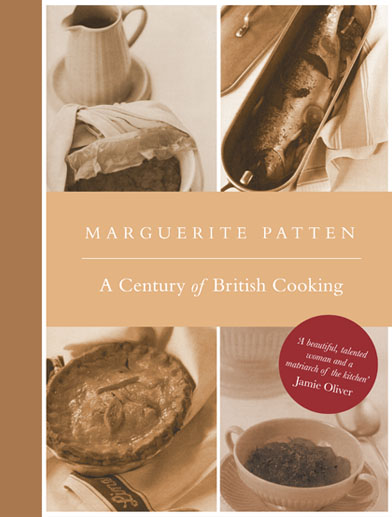


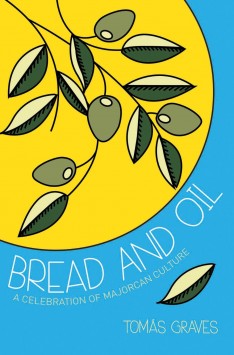
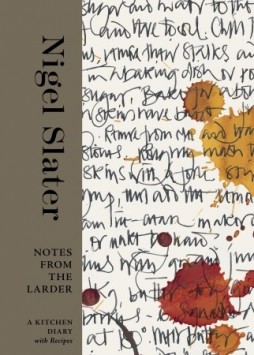
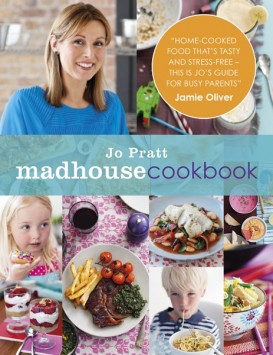
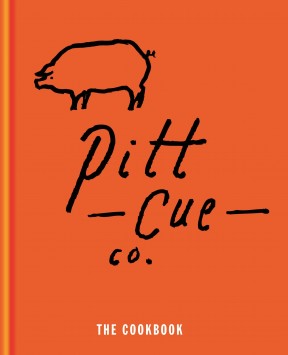
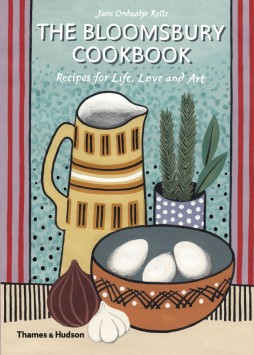
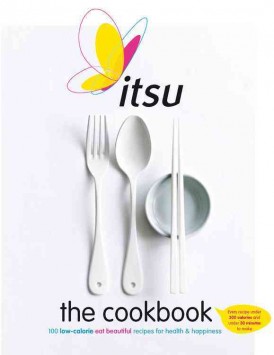
Leave a Reply